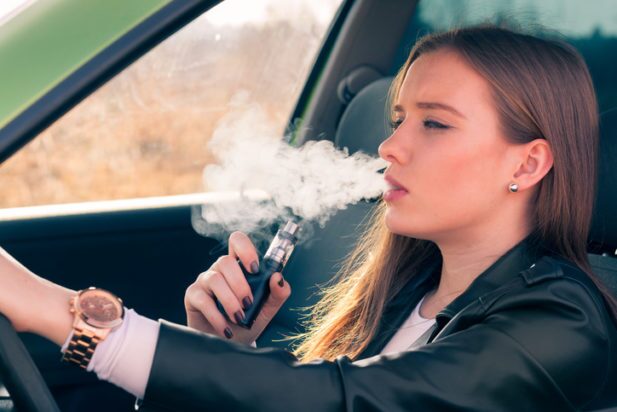Vaping In Vehicles – Is It Safe? Is It Legal?

Electronic cigarettes are the newest way to consume tobacco. E-cigarettes produce a vapour from liquid inside the e-cigarette that is vapourized by a heating element. Proponents of “vaping” suggest that it is a useful tool to quit smoking, as it allows users to feed their nicotine addiction while avoiding the carcinogens of smoking a cigarette.
The question of whether vaping is safe is a question that requires further study. While second hand vapours have not been shown to be as dangerous as second hand smoke, studies have revealed that many e-cigarettes contain diacetyl, a chemical known to cause irreversible lung disease in workers with prolonged exposure.
On October 1, 2015, an amendment to the Smoke Free Ontario Act that prohibited anyone from smoking in a vehicle with an occupant under the age of 16 came into effect. With the exception of Nunavut, the North West Territories, Newfoundland, and Quebec, all provinces and territories have laws limiting smoking in vehicles with underage occupants.
In 2016, the Ontario Government amended the Electronic Cigarettes Act, 2015, to prohibit the use of electronic cigarettes in a vehicle with an occupant under the age of 16. However, no date has been announced on when the amendment will become law.
In addition to the potential long term health impact, vaping in vehicles presents an immediate safety hazard. The vapour produced from a single exhalation is significant, and could result in a reduction of a driver’s ability to see the road. A driver whose vision is impaired because of vaping would likely be found at fault for any resulting collision.
Regardless of any future scientific findings as to the safety of vaping in vehicles, a universal truth remains: if you can’t see, you shouldn’t drive.
Contributors

The son of a grocery store clerk, Kevin grew up outside of Perth, Ontario. He credits his humble beginnings with the development of his underdog mentality, an approach he has carried into his legal career.
He attended McMaster University for two years before being granted early admission to Osgoode Hall Law School. After being called to the bar in 2008, Kevin began practising law in Hamilton before joining a leading Toronto litigation firm, representing Canada’s largest insurance companies on personal injury actions. “I didn’t find it fulfilling,” Kevin recalls. “I was helping companies save money, when what I wanted to do was help the people going up against these major corporations.” Since joining Oatley Vigmond, Kevin has used his insurance-industry experience to protect his clients and recover the compensation they deserved. He’d been at Oatley Vigmond for two months when he settled a matter for a client at a mediation. “You felt the burden of the litigation, and her injuries, lifting off her. I wanted to help even more people experience the relief of having their uncertainty lifted.’”
